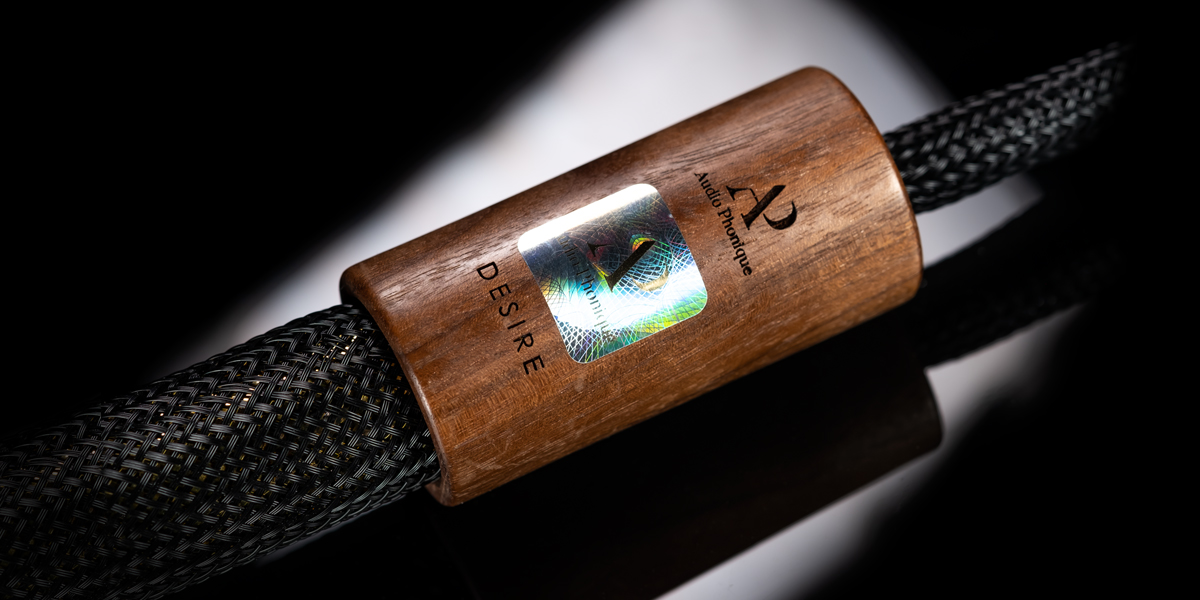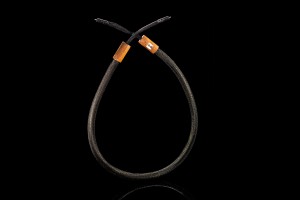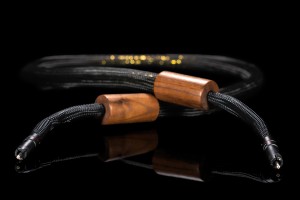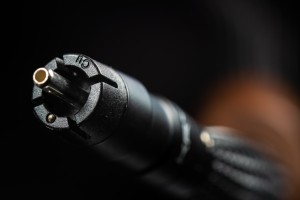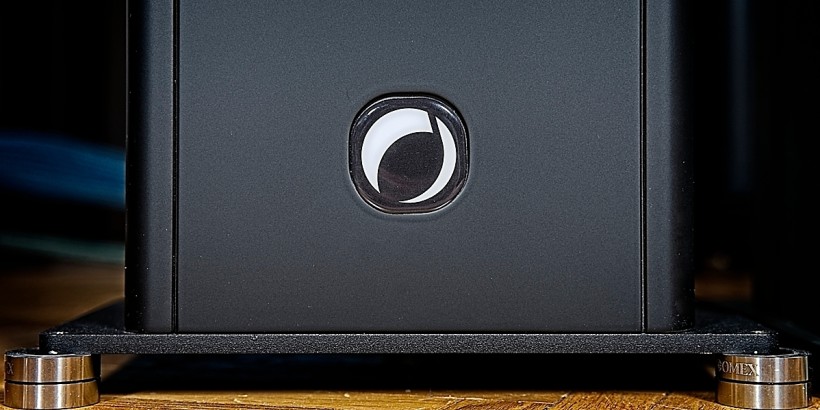Audio Phonique Desire IC is the local manufacturer’s highest-tiered interconnect, built upon quite a few resource-intense means reserved for the very best cables on the market. Now it’s time to tell its story. Enjoy!
The bridge
The most gifted audio designers whom I’ve met have one thing in common. They firmly keep away from bragging about their achievements, let alone claiming out loud that they’re experts on this or that matter. If anything, it’s the other way around. They remain modest and prefer listening over talking, while other manufacturers’ work inspires them. That said, the CTO of the local company Audio Phonique – Maciej Lenar – is far too humble to see himself as an expert on anything in particular. This however doesn’t change the fact that he’s one such a smart brain to me. Considering his equal proficiency in digital, analog and cable languages, he’s also highly versatile. Should you wonder how I know, the entire Audio Phonique roster is his doing.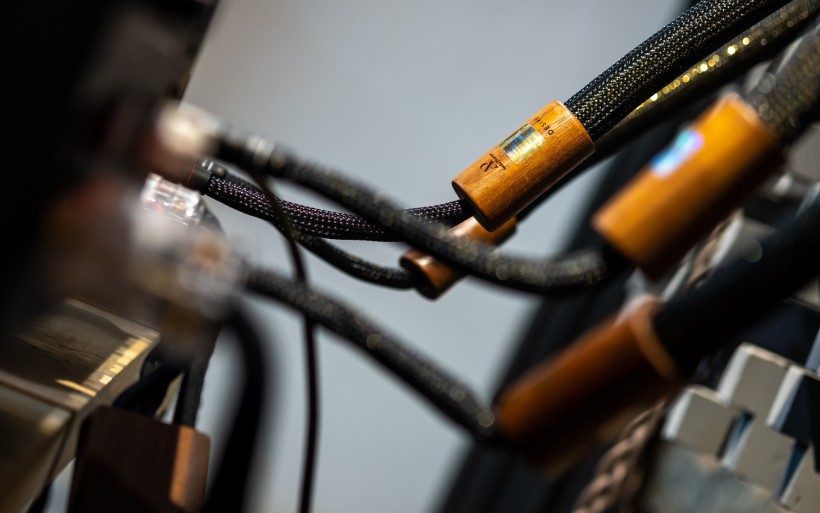 It’s quite the lineup. To recap, it lists one PC01 power conditioner and six Classic-series designs; 150D integrated amp, P1 line stage, 300D power amp, PCM/DSD DAC, PH1 phono and streamer/network player baptized Music Server. The company’s upper-echelon Statement tier comprises PSE1605 monos, Pre DHT line stage and DAC DHT. Their names and aesthetics imply kosher directly-heated pedigree and upper five-figure prices. I’ve already reviewed this entire fancy lot, so when Maciej reached out in mid August I thought that his more affordable electronics from the Classic range were about to show up on my doorstep. Not. The man’s particularly fond of cables and very pleased with his latest efforts. There’s more to this subject, however. He’s really into signal transmission and methods of improving it, to a point where our chats pretty much always end up in that fashion. As a reviewer I don’t have anything useful to say from the engineering standpoint. This doesn’t stop me from guesting Maciek every now and then, which is when he wants to test a cable prototype or two in a room other than his own. Long story short, his latest a such design proved surprising just about enough to pen this story. Scratch that, it essentially wrote itself.
It’s quite the lineup. To recap, it lists one PC01 power conditioner and six Classic-series designs; 150D integrated amp, P1 line stage, 300D power amp, PCM/DSD DAC, PH1 phono and streamer/network player baptized Music Server. The company’s upper-echelon Statement tier comprises PSE1605 monos, Pre DHT line stage and DAC DHT. Their names and aesthetics imply kosher directly-heated pedigree and upper five-figure prices. I’ve already reviewed this entire fancy lot, so when Maciej reached out in mid August I thought that his more affordable electronics from the Classic range were about to show up on my doorstep. Not. The man’s particularly fond of cables and very pleased with his latest efforts. There’s more to this subject, however. He’s really into signal transmission and methods of improving it, to a point where our chats pretty much always end up in that fashion. As a reviewer I don’t have anything useful to say from the engineering standpoint. This doesn’t stop me from guesting Maciek every now and then, which is when he wants to test a cable prototype or two in a room other than his own. Long story short, his latest a such design proved surprising just about enough to pen this story. Scratch that, it essentially wrote itself.
The latest cable additions to the Audio Phonique portfolio took the form of the Desire range, which comprises one of each a speaker cable, power cord and interconnect terminated either with XLRs or RCAs. This desirable lot represents the very best Maciej currently knows how to make. He’s also out of ideas how to go beyond and improve it given the already very impressive means he currently has at his disposal. I’m aware that this early in today’s material that may not sound too convincing or exciting, but bear with me. It’s only natural that posh luxurious electronics want fitting cables. Wealthy customers capable of swinging such expenses take shopping convenience into strong consideration, too. This is why they often finance the entire systems at one audio outfit. Audio Phonique’s top arsenal caters to such audience, so this is a practical matter for both parties involved. The question to ask is whether cables are mere fillers in-between the company’s core goods, or designs every bit as serious. Here the fun part begins.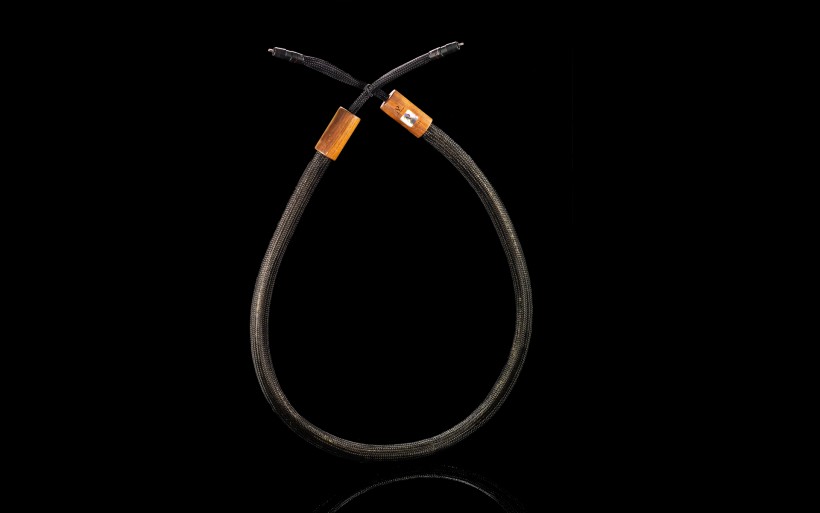 Those who know Maciej would probably agree that he’s quite obsessed with cables. So much so in fact that these days discovering to have these products really good takes him far more than minting new electronic circuits. There’s a valid reason for that. His ideas don’t fit into the frame built upon pre-made conductors purchased off the OEM spool, then terminated and that’s it. The man is fully aware that this route has some severe limitations. Today’s Desire IC loaner set tells the story how many extra miles he’d gone in order to overcome them. Most importantly, his processes of choice involve heavyweight measures reserved for very few highly regarded specialist cable makers. Audio Phonique isn’t in that group yet, but clearly makes its way there.
Those who know Maciej would probably agree that he’s quite obsessed with cables. So much so in fact that these days discovering to have these products really good takes him far more than minting new electronic circuits. There’s a valid reason for that. His ideas don’t fit into the frame built upon pre-made conductors purchased off the OEM spool, then terminated and that’s it. The man is fully aware that this route has some severe limitations. Today’s Desire IC loaner set tells the story how many extra miles he’d gone in order to overcome them. Most importantly, his processes of choice involve heavyweight measures reserved for very few highly regarded specialist cable makers. Audio Phonique isn’t in that group yet, but clearly makes its way there.
The Desire IC is a big bulky product that has very little give. It’s also very cumbersome to use in comparison to the naturally very slinky LessLoss C-MARC RCAs and their fancier Boenicke equivalents on Swiss steroids. The local has to remain stiff due to its particular geometry and more about that in a bit. The conductor itself is Maciej’s own design built upon a blend of separate copper and silver legs. The former material is monocrystalline and made to Audio Phonique’s specs in an unknown country that’s neither Poland nor China. The very special latter is bought locally in the form of granulate, and from the supplier considered as one of the best in this part of the world as far as high-purity silver is concerned. Then this raw material is processed multiple times to further raise its quality, which takes time and burns money like there’s no tomorrow. Then finished silver travels to a specialist foundry where it melts into a monocrystalline wire. Then it is drawn on diamond dies and coated with a low constant dielectric varnish.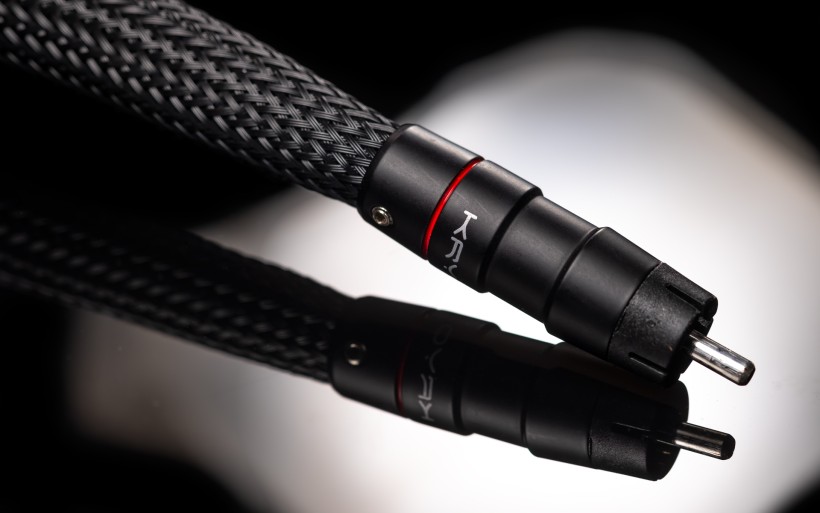 The nearly finished silver wiring which arrives to the Audio Phonique facility has one unwanted mechanical property that has to be removed. In order to do that, the company’s CEO – Wojtek Murawiec – invested into a specialist inert gas furnace. Maciej explained that the use of this device, as in: nailing the precise processing method that unlocks silver’s previously hidden yet highly desirable properties, took him by far the longest. This trial ‘n’ error period extended over many months and rendered lots of high-grade silver as unfit for further use. However, Maciej said that the resulting essential step turns the already very good conductor into one that’s significantly better when executed just right. To him all the work related to refining this procedure and burning midnight oil was worth the hassle and expense. During the final stage both silver and copper conductors are polished by hand and, in the technical sense at least, braided.
The nearly finished silver wiring which arrives to the Audio Phonique facility has one unwanted mechanical property that has to be removed. In order to do that, the company’s CEO – Wojtek Murawiec – invested into a specialist inert gas furnace. Maciej explained that the use of this device, as in: nailing the precise processing method that unlocks silver’s previously hidden yet highly desirable properties, took him by far the longest. This trial ‘n’ error period extended over many months and rendered lots of high-grade silver as unfit for further use. However, Maciej said that the resulting essential step turns the already very good conductor into one that’s significantly better when executed just right. To him all the work related to refining this procedure and burning midnight oil was worth the hassle and expense. During the final stage both silver and copper conductors are polished by hand and, in the technical sense at least, braided.
Audio Phonique Desire IC has a peculiar geometry which has to remain a secret. Suffice it to say, air is the key insulator and the conductive runs have lots of that around them. Maciej’s other insulator material of choice is medical-grade Teflon, which in comparison to standard-issue PTFE jackets has higher purity and uniform density. It also sells for about 8-10x more. The Desire IC is thick yet light mainly because it comprises multiple empty Teflon channels, among which only two house the conducive veins. The remaining tunnels are thus air-filled spacers, which separate signal legs from each other and also the external densely wound OFC-copper screen, which connected only on the source end makes today’s cable a directional affair. The outer sleeve and American Walnut splitters keep the entire structure mechanically aligned as intended. These wooden bits are dense, so they also provide a level of vibration damping. ETI Kryo RCAs with silver-plated Tellurium copper internals seal the deal. The assembly process of one 1.0m interconnect set takes 20 hours from Maciej’s own life, largely because there are way too many steps he needs to oversee in person and keep under wraps. The result has very low inductance and capacitance (10uF/m). My 1.5m loaner sells for €12’000 and each additional 0.5m is €2’000 extra. Now let me elaborate on what it does in practice and how.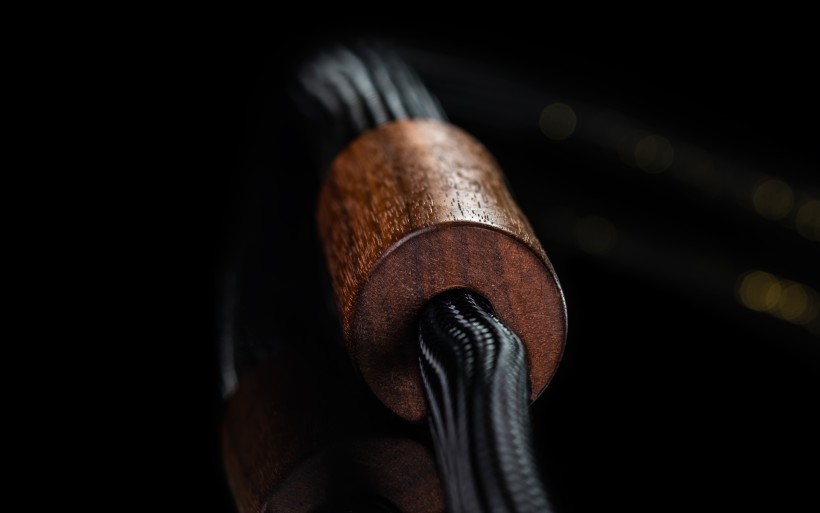 Considering the Audio Phonique’s price tag and place within my system, it had to go against the Boenicke IC3 CG and right in-between the Pacific DAC and Trilogy 915R pre. Both interconnects saw the latter’s line inputs, while the DAC accommodated either one or the other. This means that I had to mute my pre, manually engage the IC of choice, change inputs and that was it. The entire procedure was as quick and easy as they get, and without any downtime as well. The Boenicke is exceptionally bendy, so routing it wasn’t a problem. The far thicker and stiffer Desire IC required some careful handling, but after one swap I had a way of using it without breaking anything. To most regular customers this won’t even be a con, because their cable purchases often spend months if not years in the same place. Reviewers have to bite the bullet, but I won’t complain.
Considering the Audio Phonique’s price tag and place within my system, it had to go against the Boenicke IC3 CG and right in-between the Pacific DAC and Trilogy 915R pre. Both interconnects saw the latter’s line inputs, while the DAC accommodated either one or the other. This means that I had to mute my pre, manually engage the IC of choice, change inputs and that was it. The entire procedure was as quick and easy as they get, and without any downtime as well. The Boenicke is exceptionally bendy, so routing it wasn’t a problem. The far thicker and stiffer Desire IC required some careful handling, but after one swap I had a way of using it without breaking anything. To most regular customers this won’t even be a con, because their cable purchases often spend months if not years in the same place. Reviewers have to bite the bullet, but I won’t complain.
Prior to explaining how the Desire IC fared against my daily driver, several words about the latter are in order. I haven’t sampled many interconnects in the past, so I’m not the industry’s oracle on the matter. I will however say that Sven Boenicke’s IC3 CG built upon the upscaled LessLoss C-MARC tech is sound wise the most accomplished interconnect set I had the pleasure of using in my system. As such it’s been present therein for several years now. However, this is a cable for special occasions when my platform has to perform at its very best. It gets to work when costly exotic components in demand of fitting accessory supports arrive. Otherwise LessLoss Entropic-processed C-MARC RCAs do the trick. The Swiss is a three-legged product with a standalone return vein, which is tricky to set up on my DAC’s WBT RCA outs without the audible buzz on speakers. Finicky or not, this time around the IC3 CG was the interconnect to use.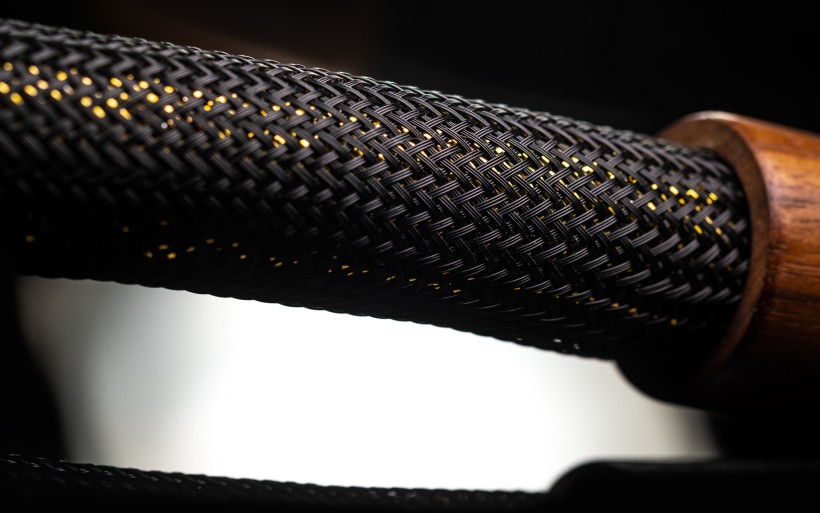 The IC3 CG’s profile is built upon pristine pitch-black backdrop busy with pleasantly round, firm, internally moist, texturally loaded, touchable and very much alive virtual contours. All these perks we associate with a high-tiered noise rejection, which also naturally says nay to excessive tension, glare, nervousness, outline chiseling, grain and roughness. That kind of voicing puts omnipresent calmness, relaxed musical intake, juicy colors, big tone and vividness on the pedestal. Although the IC3 CG keeps heavy tonal makeovers at the door and inherently is benign, on raunchy bass-intense fare it immediately transitions from naturally mild rumble to fierce immediate quick jabs without any sensible limitations on dynamics and spatial scale. This is one of its major strengths and one big attractor to boot.
The IC3 CG’s profile is built upon pristine pitch-black backdrop busy with pleasantly round, firm, internally moist, texturally loaded, touchable and very much alive virtual contours. All these perks we associate with a high-tiered noise rejection, which also naturally says nay to excessive tension, glare, nervousness, outline chiseling, grain and roughness. That kind of voicing puts omnipresent calmness, relaxed musical intake, juicy colors, big tone and vividness on the pedestal. Although the IC3 CG keeps heavy tonal makeovers at the door and inherently is benign, on raunchy bass-intense fare it immediately transitions from naturally mild rumble to fierce immediate quick jabs without any sensible limitations on dynamics and spatial scale. This is one of its major strengths and one big attractor to boot.
Background blackness is by nature calm, soothing and somewhat sweet. As such it prioritizes tonal richness, mellowness and detail provision in a highly civilized smooth manner. It thus primarily boosts aspects which make music enjoyable to listen to and pretty, so we don’t expect it to support dynamics, agility and power to the same extent. Usually it’s either one trait group or the other that gets prioritized, not both. The IC3 CG is unique in the sense that its predominantly coherent, charming, nuanced, relaxed and elegant voice has a wickedly quick dynamically responsive slamming backbone. On calm music this turbocharged core remains hidden as it should. On intense tracks however it clearly registers to marvelously crank up the sensation of intensity, spatial scale and overall shove. The result is a tonally and texturally packed cable that’s also very punchy and fearless upon demand. It shouldn’t but it is.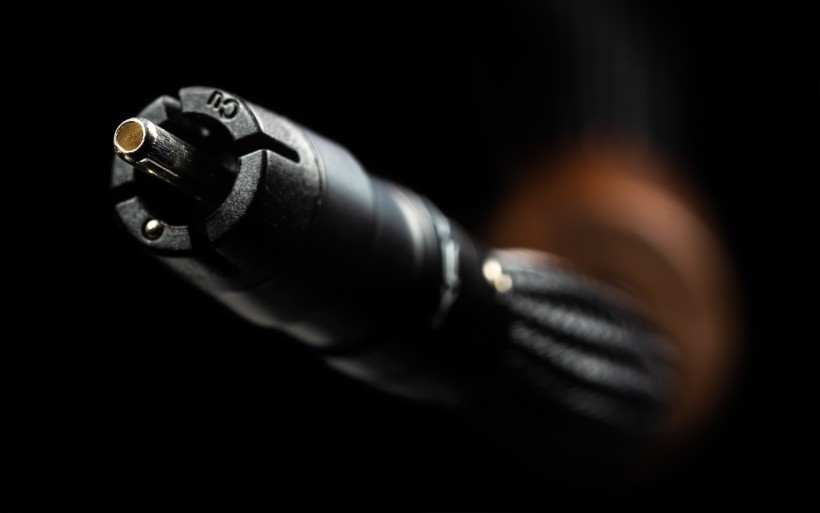 Upon the IC3 CG’s arrived my previous far more affordable reference quickly became wobblier on bass, icier, dim, less resolved, grainier and texturally pale, which was only expected given the price gap between the two. More importantly, that day I’ve learned something new about interconnects. The Swiss not only was the plainly superior specimen, but its overall impact on my system was significantly more pronounced. Back then I simply wasn’t aware that interconnects could be this noticeable. The IC3 CG clearly was and impressed with the additional reserves of openness, clarity, imaging depth, spatial presence and expressiveness which I haven’t yet heard from that kind of a product. Just to be clear, the means listed here go beyond flavoring into the sheer performance realm that drastically changes the entire view and makes it better. This is precisely what makes these assets meaningful.
Upon the IC3 CG’s arrived my previous far more affordable reference quickly became wobblier on bass, icier, dim, less resolved, grainier and texturally pale, which was only expected given the price gap between the two. More importantly, that day I’ve learned something new about interconnects. The Swiss not only was the plainly superior specimen, but its overall impact on my system was significantly more pronounced. Back then I simply wasn’t aware that interconnects could be this noticeable. The IC3 CG clearly was and impressed with the additional reserves of openness, clarity, imaging depth, spatial presence and expressiveness which I haven’t yet heard from that kind of a product. Just to be clear, the means listed here go beyond flavoring into the sheer performance realm that drastically changes the entire view and makes it better. This is precisely what makes these assets meaningful.
Most shoppers select cables which have the highest chance of elevating the performance of electronics they see. The IC3 CG doesn’t care about the nearby hardware, because its profile built upon the inherently universal noise rejection wasn’t tailored to combat any specific coloration or downside, which usually comes at a cost paid elsewhere. Over the last four years the Boenicke leash skillfully supported every component that was sent my way without hiccups. As such it has stood the trial of time and kept any craves for upgrades at bay. Then again, I like to think that audio cables as expensive as this one really should stand their ground in every situation, not only the most favorable scenarios.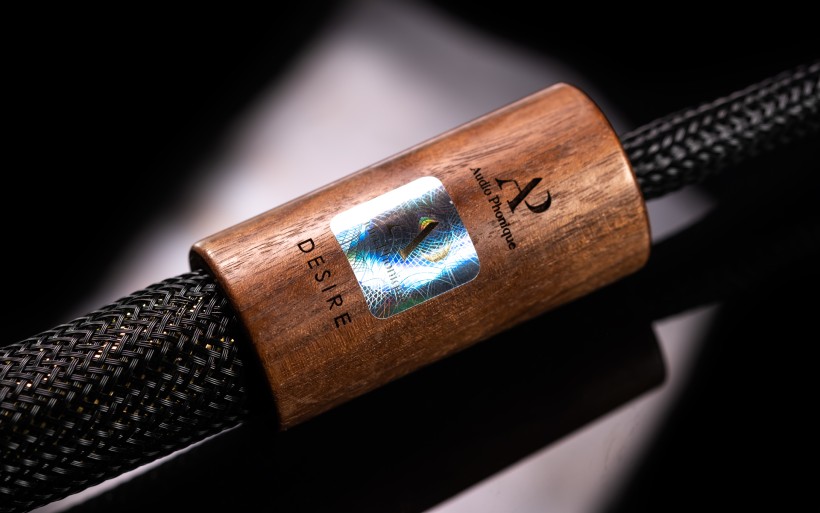 Should you wonder about the long-winded IC3 CG bit above, it was necessary. This time around I encountered an interconnect set that I can safely consider as an upper-echelon product. As such it needs a broad context given the result. I hadn’t seen it coming and neither did Maciej. During the introductory rotation or two at my place he only mentioned that the Swiss IC sounded is very good. At that time the man was happy that his latest creation wasn’t too far behind. What happened after about an hour or so is an entirely different story. Sven’s cable did its thing pretty much right off the bat and as per usual. Maciej’s design wanted some time to settle in. Past that apparently mandatory stage it had flourished into a spectacular interconnect that had me thoroughly impressed for several specific reasons.
Should you wonder about the long-winded IC3 CG bit above, it was necessary. This time around I encountered an interconnect set that I can safely consider as an upper-echelon product. As such it needs a broad context given the result. I hadn’t seen it coming and neither did Maciej. During the introductory rotation or two at my place he only mentioned that the Swiss IC sounded is very good. At that time the man was happy that his latest creation wasn’t too far behind. What happened after about an hour or so is an entirely different story. Sven’s cable did its thing pretty much right off the bat and as per usual. Maciej’s design wanted some time to settle in. Past that apparently mandatory stage it had flourished into a spectacular interconnect that had me thoroughly impressed for several specific reasons.
If the Swiss’ relaxation, inky backdrop, moisture, intense colors, spatial presence and occasional bass steroids are its main fortes, then the aces up Desire’s sleeve take the form of openness, oxygenation, resolve, reverberation, spatial scale, elasticity, energy, nimbleness and overall freshness. That makes the former darker, more anchored and moodier against the latter’s twitchier, more lit up, electric and radiant disposition. One thus represents golden autumn colors and vibe that’s cozy in the first place. The other leans towards early spring days’ zesty air, extra shine and tonal palette that’s wide and occupied with fruity colors, which are naturally intense on eyes. Chalk and cheese then? Well, to an extent at least. Both interconnects proved high-tiered and seasoned enough to not remain only at their primary turfs and overstay their welcome there. That said, the IC3 CG aspirated for earthy thick moist MO also delivers on resolution, radiance, openness and speed. The Desire primarily groomed for sporty traits also embeds spot on thickness, amazing reach, big tone, sensuality, smoothness and juiciness. In fact, the general voicings of these cables aren’t that far off from each other. Yes, each’s key assets shine through and clearly at that, but they’re both satisfyingly sorted and complete on all relevant aspects. This is why fishing for downsides wasn’t on the agenda. Rather, I was after those traits which gave one or the other the clear advantage, if any at all. The hunt didn’t last long. Within some four hours or so the two of us had all the intel to know which cable fared better, where and exactly how. The Desire’s remaining two-week stay in my system merely confirmed these early observations. To explain what had happened, let me point your attention to Garth Brooks’ take on “Hard Luck Woman” originally by Kiss. This cover song is built upon the lead singer’s voice assisted mainly by guitars, which the Desire rendered as fair bit more sonorous, extended and delicately reverbed. The local interconnect did something which I’d compare to going from a good class A transistor amp to an excellent DHT-infused equivalent. Then acoustic guitars often become a touch lighter on delivery, but also sound more expressive and melodic, as if an artist found a way how to make each individual string pluck more distinct. The IC3 CG already is excellent on such tasks. The Desire performed as it were tailored for them. Come to think of it, that shouldn’t surprise. Maciej is big on directly-heated glass after all.
The hunt didn’t last long. Within some four hours or so the two of us had all the intel to know which cable fared better, where and exactly how. The Desire’s remaining two-week stay in my system merely confirmed these early observations. To explain what had happened, let me point your attention to Garth Brooks’ take on “Hard Luck Woman” originally by Kiss. This cover song is built upon the lead singer’s voice assisted mainly by guitars, which the Desire rendered as fair bit more sonorous, extended and delicately reverbed. The local interconnect did something which I’d compare to going from a good class A transistor amp to an excellent DHT-infused equivalent. Then acoustic guitars often become a touch lighter on delivery, but also sound more expressive and melodic, as if an artist found a way how to make each individual string pluck more distinct. The IC3 CG already is excellent on such tasks. The Desire performed as it were tailored for them. Come to think of it, that shouldn’t surprise. Maciej is big on directly-heated glass after all.
To confirm these findings I cued up Luca Stricagnoli’s “The Last of the Mohicans”. The same differences registered as clearly as before. If we’ll assume that soulless audio hardware aspires to get us as close to the experience only live music can provide, then the Desire got me fair bit closer to that pinnacle than the IC3 CG. This wasn’t the only upper had the former had on my daily driver. Maciej expressed his interest in listening to snappier more charged repertoire, so I happily obliged the man. The movie “Zatoichi” with Takeshi Beat Kitano has one awesome soundtrack that packs calm and polite as much as wild and naughty. The eleventh song “Festivo” is one of my go-to choices that’s spatially, instrumentally and dynamically as intense as they come. Here the Desire was sensibly more illuminated, instantaneous, electric, direct and dynamically broad. This blend of traits was a spot on supportive package for that track’s vibe. Then to even the odds we moved onto repertoire tailored for the IC3 CG. That change of pace demanded calmness, gravity and minimalism to highlight how good the Swiss was on backdrop cleanliness and individual outlines. This didn’t go exactly as I hoped it would. Nobuo Uematsu’s track “Beyond the Wasteland” had it all. Up to about 1:45 its heavy and intense atmosphere, all in all remarkable, is built with very simple yet powerful and damn effective means. Early on the song’s hauntingly dark vast space is busy only with deep pulsating bass blows, simple piano line and occasional double bass notes. The IC3 CG handled brilliantly all that. The Desire was a touch leaner and similarly gargantuan on rendered space and its pristine nature, but had the upper hand on two key counts which I didn’t foresee. It sounded noticeably larger and more powerful, but not due to any increase in its imaging size. On that score the fight was even. The local cable reached even lower and packed more power into these low jabs, as if it had a way of propagating more air into my room and making the entire track more pressurized and intense. Although that alone made a big difference beyond one’s subjective likings and whatnots, the Desire scored its final and probably most notable victory point on double bass. The disparity between the two contestants on this particular instrument was large to put it mildly. Audio Phonique’s latest made it sensibly larger, stronger, fuller, ripped, energetic and more direct versus the Swiss’ somewhat distant, cozier and smaller take on the same job. All the music I listened to over the next weeks reassured me in these observations. The Desire had that extra bite, charge, reach and snap the IC3 CG didn’t have developed this generously. The latter had its revenge on color and anchoring, so with some lean speakers it’d be more beneficial in the grand scheme. Then again, Maciej’s latest cable proved excellent on all aspects related to color, to a point where my ears didn’t luster for more of these. Considering its performance within my system, I’d like to see how it’d do against top choices from Siltech or Ansuz.
Then to even the odds we moved onto repertoire tailored for the IC3 CG. That change of pace demanded calmness, gravity and minimalism to highlight how good the Swiss was on backdrop cleanliness and individual outlines. This didn’t go exactly as I hoped it would. Nobuo Uematsu’s track “Beyond the Wasteland” had it all. Up to about 1:45 its heavy and intense atmosphere, all in all remarkable, is built with very simple yet powerful and damn effective means. Early on the song’s hauntingly dark vast space is busy only with deep pulsating bass blows, simple piano line and occasional double bass notes. The IC3 CG handled brilliantly all that. The Desire was a touch leaner and similarly gargantuan on rendered space and its pristine nature, but had the upper hand on two key counts which I didn’t foresee. It sounded noticeably larger and more powerful, but not due to any increase in its imaging size. On that score the fight was even. The local cable reached even lower and packed more power into these low jabs, as if it had a way of propagating more air into my room and making the entire track more pressurized and intense. Although that alone made a big difference beyond one’s subjective likings and whatnots, the Desire scored its final and probably most notable victory point on double bass. The disparity between the two contestants on this particular instrument was large to put it mildly. Audio Phonique’s latest made it sensibly larger, stronger, fuller, ripped, energetic and more direct versus the Swiss’ somewhat distant, cozier and smaller take on the same job. All the music I listened to over the next weeks reassured me in these observations. The Desire had that extra bite, charge, reach and snap the IC3 CG didn’t have developed this generously. The latter had its revenge on color and anchoring, so with some lean speakers it’d be more beneficial in the grand scheme. Then again, Maciej’s latest cable proved excellent on all aspects related to color, to a point where my ears didn’t luster for more of these. Considering its performance within my system, I’d like to see how it’d do against top choices from Siltech or Ansuz.
I’m aware that this may sound like a worn out record, but Audio Phonique Desire IC represents exoticism targeted at very few wealthy people, who see such expenses as casual pleasures. That said, most shoppers will be better off spending the same coin elsewhere, presumably on fancier speakers, amp or DAC. This cable exists however, I had the pleasure of sampling it and the price below neither takes anything away from it nor changes what it is, namely the best interconnect I’ve come across to date. My tip of the hat to Maciej Lenar for relentlessly pursuing his wicked cable ideas, and props to Wojciech Murawiec for financing them and trusting his CTO. It was worth it. I strongly think that their Desire IC can comfortably exchange blows with every other well-established competitor in its price range and above. It’s that good and deserves the red given how it impressed me.
Associated Equipment:
- Amplifier: Trilogy 995R, FirstWatt F7, Enleum AMP-23R
- DAC: LampizatOr Pacific (KR Audio T-100 / Living Voice 300B + KR Audio 5U4G Ltd. Ed.)
- Speakers: Boenicke Audio W11 SE+, sound|kaos Vox 3afw
- Transport: Innuos Statement, fidata HFAS1-S10U
- Preamplifier: Trilogy 915R, Thöress DFP
- Speaker cables: Boenicke Audio S3, LessLoss C-MARC
- Headphones: HifiMan Susvara
- Speaker signal conditioning: LessLoss Firewall for Loudspeakers, Boenicke ComDev
- Anti-vibration conditioning: 6x Carbide Base Diamond (under speakers), 6x Carbide Base Micro Diamond with TwinDamp inserts and spikes (under DAC and pre)
- Interconnects: LessLoss Entropic Process C-MARC, Boenicke Audio IC3 CG
- Power components: Gigawatt PC-3 SE EVO+/LC-3 EVO, LessLoss C-MARC, LessLoss Entropic Process C-MARC, Boenicke Audio Power Gate, ISOL-8 Prometheus
- USB components: iFi audio Mercury3.0
- Rack: Franc Audio Accesories Wood Block Rack 1+3
- Network: Fidelizer EtherStream, Linksys WRT160N
- Music: NativeDSD
Retail prices of reviewed components in EU (excl. VAT):
- Audio Phonique Desire IC 1.5m: €12’000
- Each additional 0.5m: €2’000
Manufacturer: Audio Phonique



